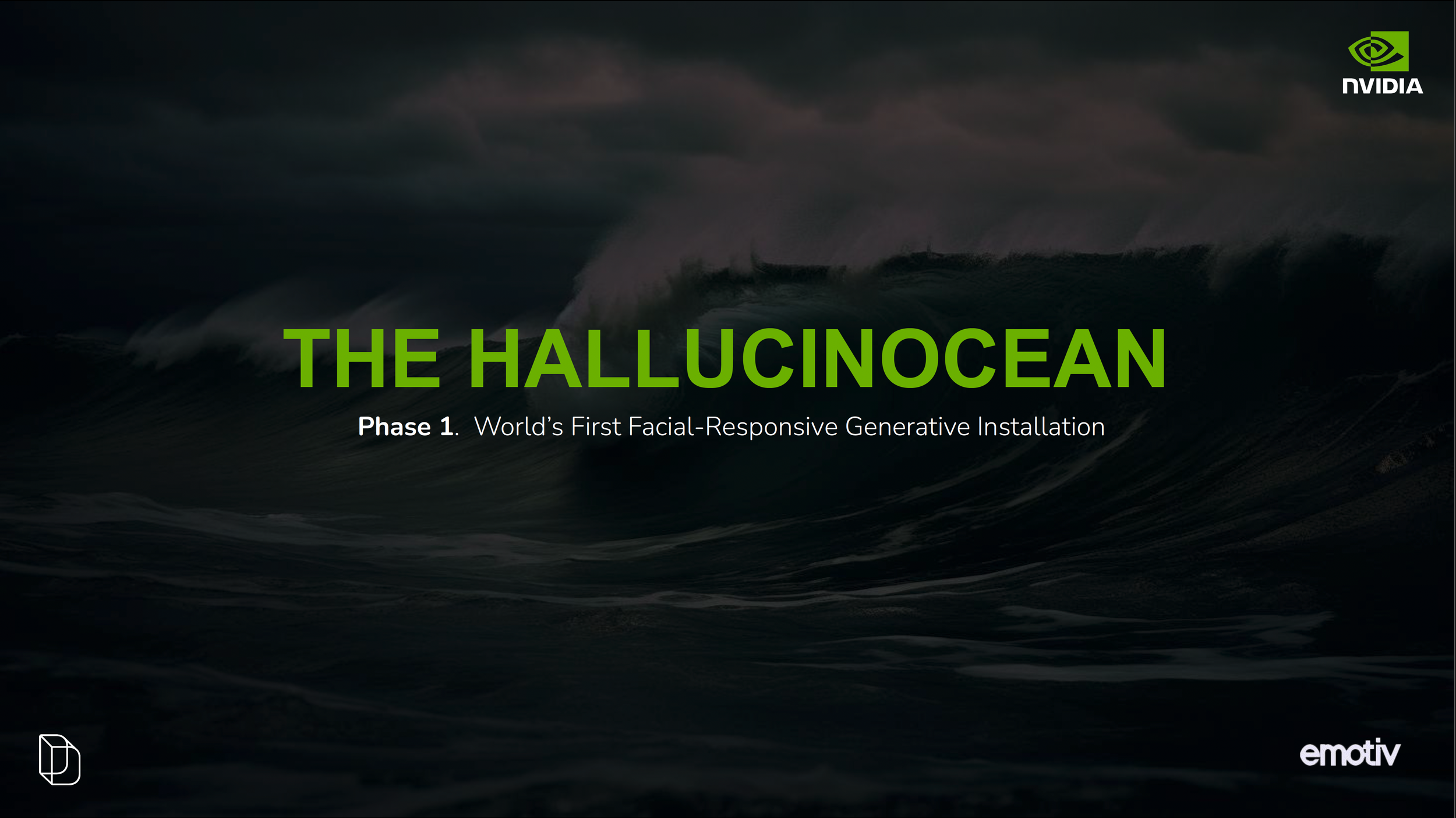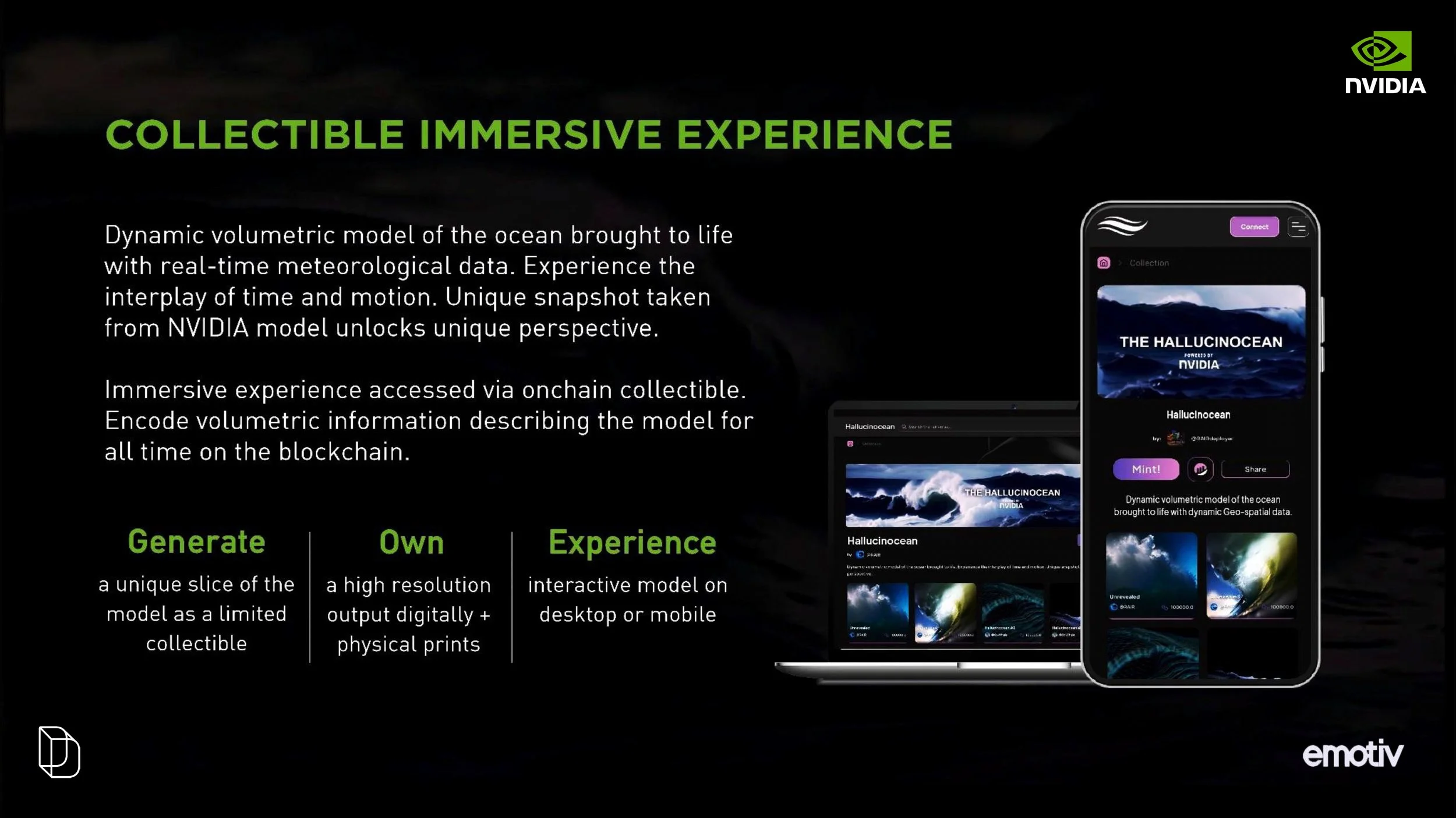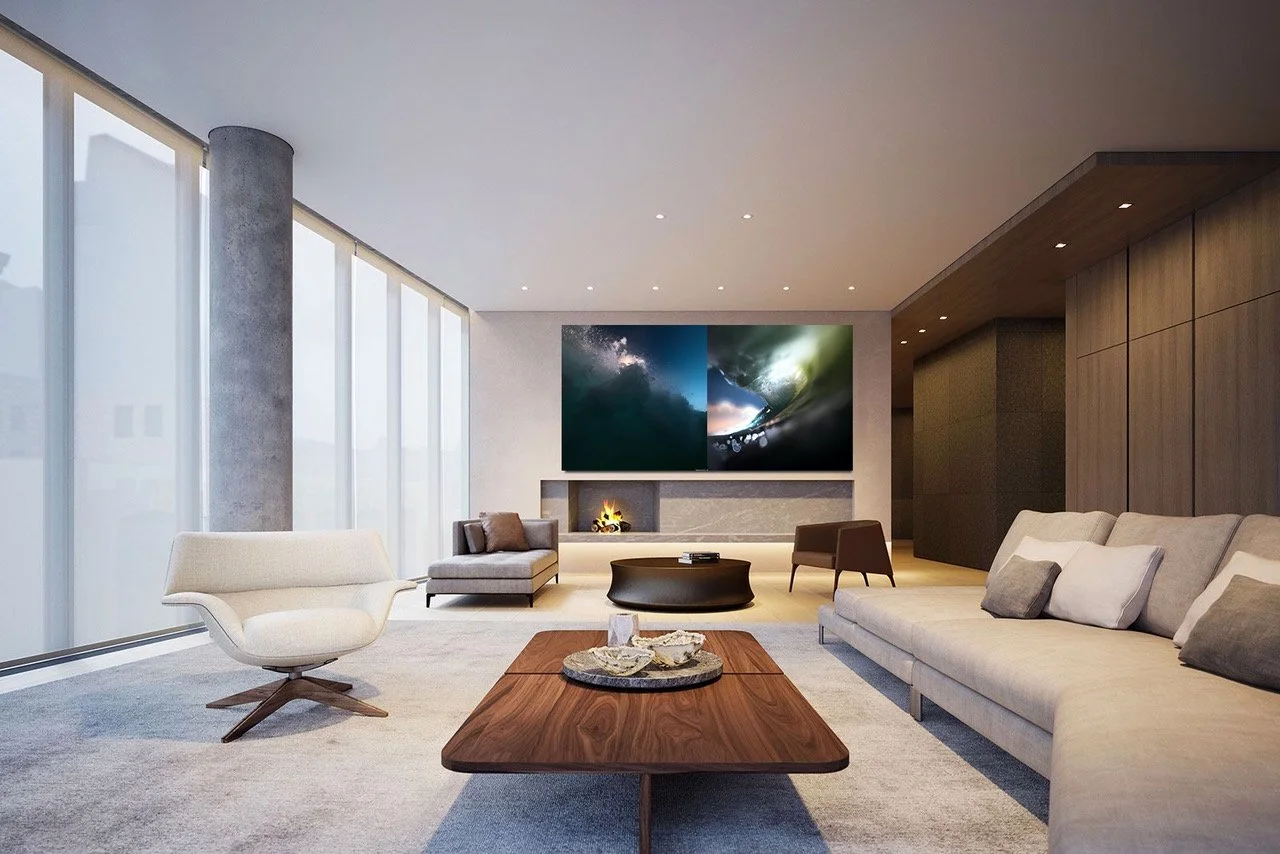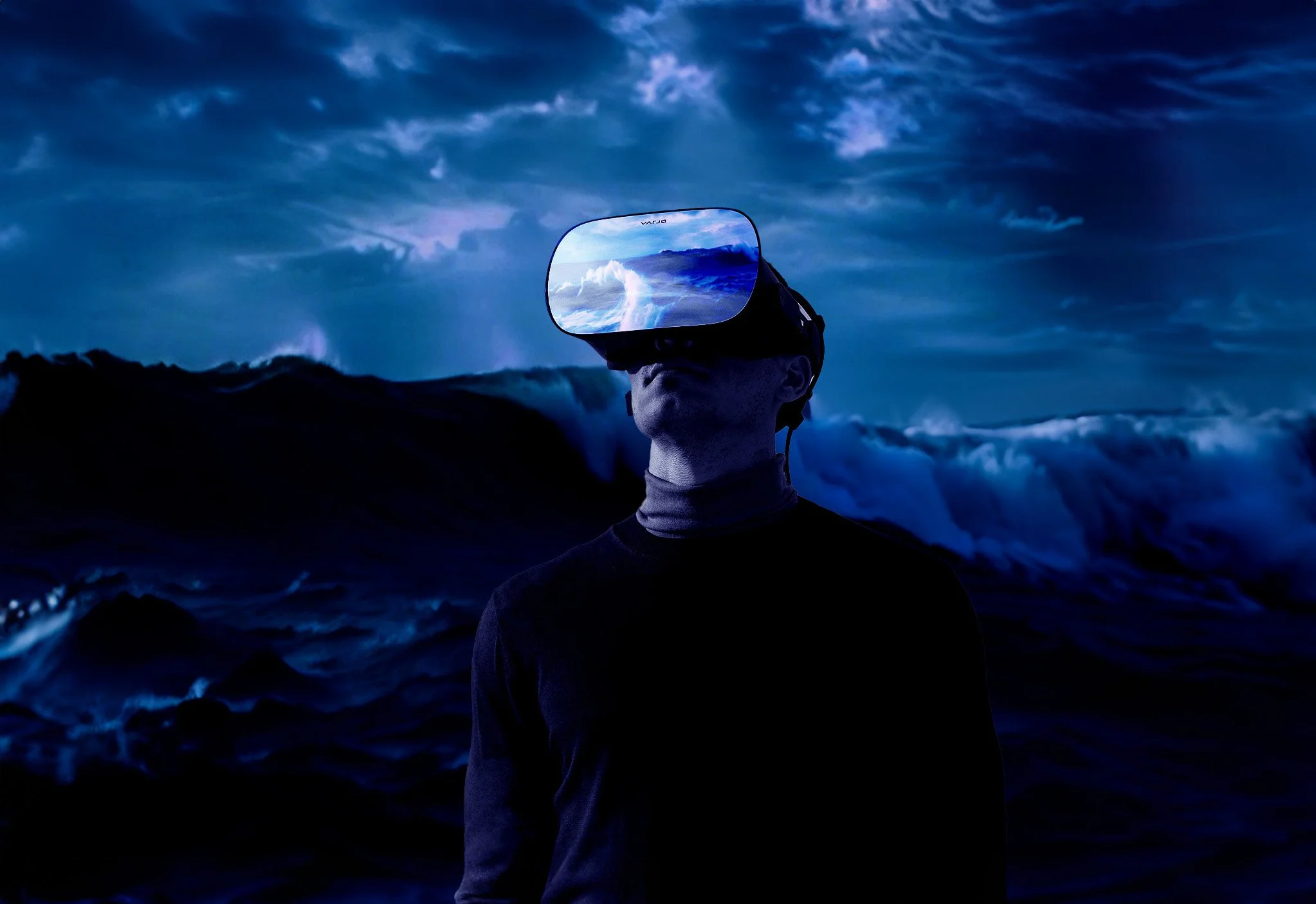| THE HALLUCINOCEAN (AND THROUGH WINDOWS THE SEA)
PHYSICAL AND MIXED REALITY EXHIBITION CONCEPT
The Hallucinocean explores our reciprocal relationship to the environment.
In conjunction with the Climate Foundation, the work demonstrates our impact on the environment, and points to ways in which we can mitigate, or reverse, catastrophic human activity.
The physical installation uses specialized LED displays, human recognition systems, live meteorological data, and AI to generate a realtime model* of the ocean that responds to facial expressions.
Designed for XR devices, the virtual installation uses the same volumetric model to create a dynamic, immersive ocean that generates music as the user interacts with the water and waves.
*Optional use of volumetric AI model, or generative AI (diffusion model/PFGM++) imagery.














